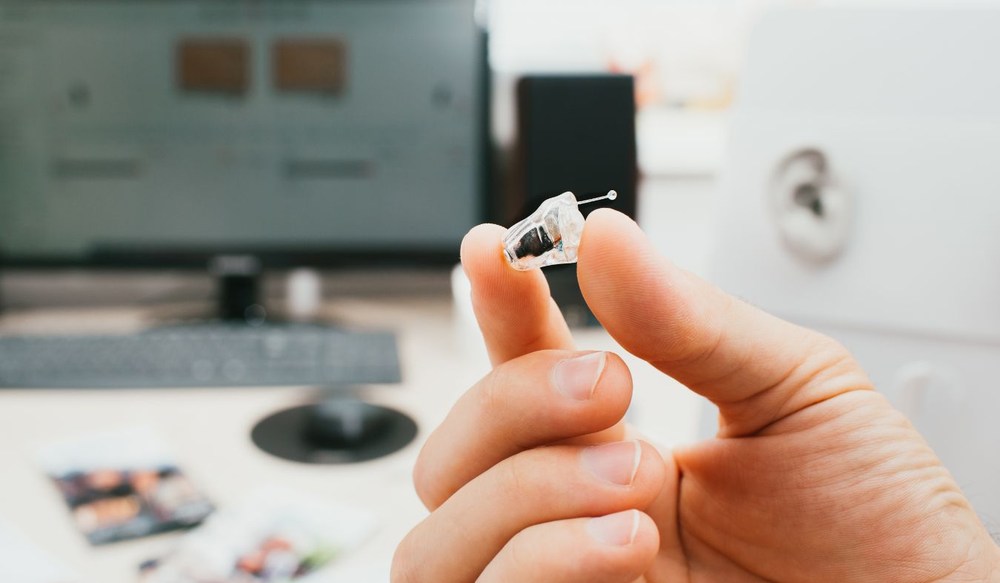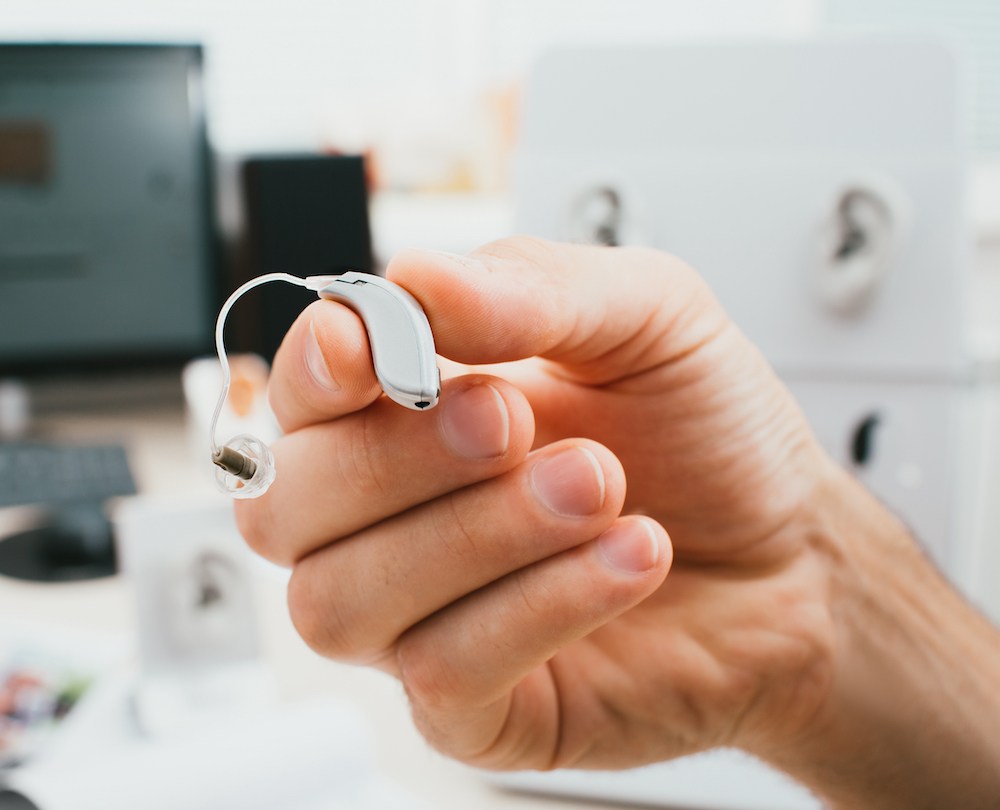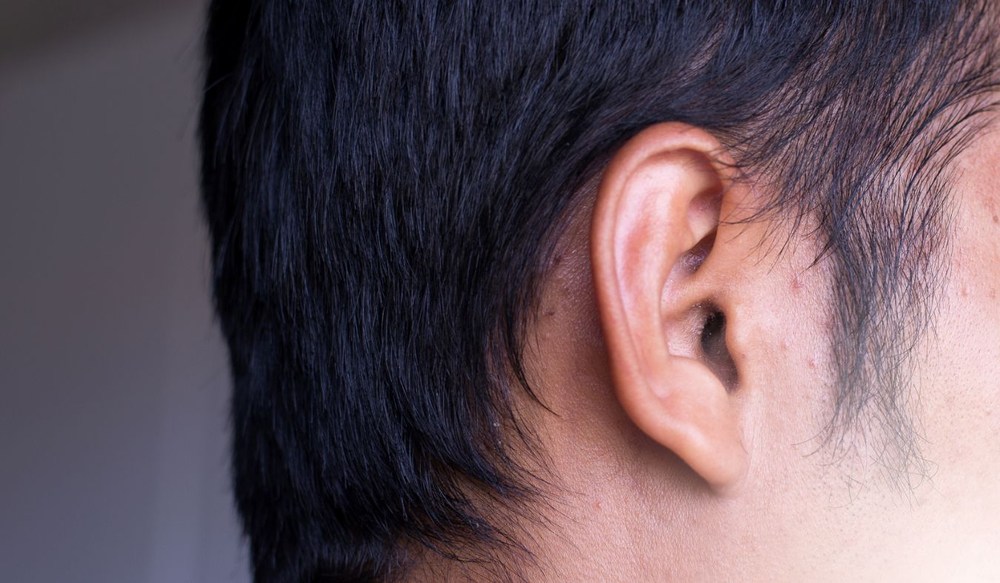Understanding Hearing Aid Feedback: Causes and Solutions
That annoying whistling or squealing sound from your hearing aids can turn
We value our patients and want everyone to be safe. We will be happy to see any patient that is in need of our service. Service is our #1 priority!

By: admin | October 30, 2024
Understanding hearing aid feedback is important for anyone who relies on these devices for better hearing. Have you ever experienced a sudden whistling or beeping from your hearing aid, disrupting a conversation or moment? This occurrence is known as hearing aid feedback, a frequent challenge faced by many wearers at some point. It typically happens when sound from the hearing aid re-enters the microphone, creating a loop that results in that annoying noise.
By recognizing the causes of feedback and knowing how to address them, you can improve your overall experience with hearing aids. Factors like improper fitting, earwax buildup or using certain accessories can contribute to this issue. Understanding these elements can help you make adjustments and ensure your hearing aids function smoothly in everyday situations.
Hearing aid feedback primarily happens when sound escapes your ear and finds its way back into the microphone. When this loop of sound repeats itself, it results in an annoying whistle. Besides being a nuisance, feedback can also interfere with the clarity of sounds, making it harder for you to understand speech. It’s important to know that while some amount of feedback is normal, persistent or loud feedback could indicate a problem with the fit of your hearing aids or damage to certain parts. If you experience such issues, consulting with a hearing instrument specialist should be your next step. They can help identify the cause and suggest appropriate solutions.
We should also mention hearing aid maintenance. Regular cleaning and proper storage not only extend the lifespan of your devices but also ensure they function at their best. It’s a small investment of time that pays off in improved performance and longevity.
Hearing aids are intricate devices designed to assist individuals with hearing loss by amplifying sounds. Understanding how they work involves looking at their main components and how these interact to convert sound waves into signals that the wearer can understand.
At the core of a hearing aid are several key components: a microphone, amplifier, speaker (or receiver) and a power source. The process begins when sound enters the device through the microphone. The microphone picks up environmental sounds and converts these sound waves into electrical signals. These signals are then sent to the amplifier, where they are processed. The amplifier increases the strength of these signals, making them louder while also adjusting certain frequencies based on the wearer’s specific hearing needs. This step is crucial because different types of hearing loss can affect various frequencies differently.
Once the sound has been amplified, it travels to the speaker, which converts the electrical signals back into sound waves. These sound waves are then delivered directly into the wearer’s ear canal, allowing them to hear more clearly. Many modern hearing aids feature digital signal processing, which enables them to filter out background noise and enhance speech sounds, providing a more natural listening experience. Additionally, hearing aids can be programmed and fine-tuned by an audiologist to match the wearer’s unique hearing profile, ensuring optimal performance.
Lastly, the device is powered either by disposable batteries or rechargeable batteries, ensuring the hearing aid operates efficiently throughout the day. This combination of advanced technology and personalized fitting makes hearing aids an effective solution for many individuals experiencing hearing loss.
Have you ever thought about the role of amplification in your hearing aids? How does this function contribute to enhancing your hearing experience?
Amplification is a key part of the operation of hearing aids. It’s not just about making sounds louder, but more importantly, it’s about making them clearer and easier for you to understand. This is achieved by increasing the volume of sounds that you struggle to hear while keeping other sounds at their normal levels.
The advanced technology in modern hearing aids allows for this selective amplification, ensuring that you can hear and understand speech better without everything else becoming uncomfortably loud. The goal isn’t just to make everything louder; it’s to make your world sound balanced and clear. So next time when you adjust your hearing aid volume, know that you’re controlling an important tool designed to optimize your hearing experience.
Hearing aid feedback is a common concern that many wearers face, often causing frustration during conversations or daily activities. Identifying the triggers of feedback is essential for effectively managing this issue and ensuring your hearing aids function optimally. By understanding what can cause this phenomenon, you can take proactive steps to mitigate it.
Hearing aid feedback can be triggered by several factors:
When we look at the issue of poorly fitted hearing aids, we find a significant cause of feedback fallout. The importance of a well-fitted hearing aid cannot be overstated. In fact, a survey by the National Council on Aging found that nearly 70% of people who reported dissatisfaction with their hearing aids cited poor fit as the main issue.
A poorly fitted hearing aid can allow sound to escape and re-enter the microphone, causing an irritating feedback loop. This not only disrupts your listening experience but can also lead to misunderstandings during conversations. To prevent this, regular visits to your hearing instrument specialist for adjustments are essential. With their expertise, they can ensure your hearing aids fit perfectly and function optimally, reducing the chance of feedback fallout.
Earwax, also known as cerumen, is a natural substance produced by the glands in the ear canal. It serves several important functions, like protecting the ear from dust, debris and bacteria, as well as helping to maintain moisture. However, when earwax builds up excessively, it can create problems, particularly for those who wear hearing aids. Blocked ear canals can interfere with sound transmission and lead to discomfort, reduced hearing ability and the potential for hearing aid feedback.
When there is a significant accumulation of earwax, it can cause sound waves to bounce back into the hearing aid’s microphone, resulting in the annoying whistling or beeping known as feedback. This feedback can disrupt conversations and diminish the overall effectiveness of the hearing aids. Regular cleaning and maintenance of both the ear canal and hearing aids are essential to prevent this issue. By keeping the ear canal clear and ensuring your hearing aids are functioning properly, wearers can enjoy a more comfortable and effective listening experience.
Understanding feedback from your hearing aids is a crucial part of using them effectively. However, it’s important to know that not all feedback is created equal. There’s a difference between normal and abnormal feedback, and recognizing this can help you maintain optimal hearing aid performance.
Normal feedback occurs when your hearing aids are inserted or removed, or if something comes too close to the microphone, like a hat or a hand. This type of feedback is temporary and stops once the obstruction is removed. On the other hand, abnormal feedback happens continuously while wearing your hearing aids and could signal an issue with the fit or possible damage to the device. If you’re experiencing persistent whistling sounds from your hearing aids, it’s recommended to consult with a hearing instrument specialist for advice. Early intervention can prevent small issues from becoming bigger problems down the line!
When we look closer at feedback issues, it’s worth noting that advanced technology plays a key role in minimizing this problem. The cutting-edge features in modern hearing aids are designed to reduce feedback and improve your overall listening experience.
Most of today’s hearing aids come equipped with digital feedback suppression systems. These smart tools are designed to recognize the onset of feedback and make adjustments to prevent it from becoming an annoyance. In addition, they also help maintain the clarity of sounds, ensuring you don’t miss out on any important conversations or sounds around you.
Now let’s discuss how adjusting your hearing aid settings can help manage feedback. Tweaking certain settings on your device can significantly reduce the occurrence of that pesky whistling or squealing noise.
Fine-tuning the volume and frequency controls on your hearing aids is one such strategy. By reducing the overall volume or adjusting the frequencies that are amplified, you can effectively minimize feedback. It’s important to remember that these adjustments should be made in consultation with a hearing specialist to ensure optimal performance and comfort.
Let’s focus on preventing feedback through proper maintenance and cleaning. Consistent upkeep of your hearing aids can greatly reduce the occurrence of feedback, ensuring a smoother listening experience.
Regular cleaning is key in maintaining the efficiency of your hearing aids. Dust or earwax buildup can block sound pathways, leading to feedback. By keeping your devices clean and free from debris, you can prevent such issues. Proper storage when not in use protects them from potential damage that could cause feedback. A little effort towards maintaining your hearing aids can go a long way in enhancing their performance and durability. Taking care of your hearing aids is taking care of your hearing health!
Let’s talk about a situation that might be all too familiar: persistent feedback issues. You’ve tried everything – adjusting your hearing aid settings, maintaining proper hygiene and ensuring your devices are well cared for. Yet, the annoying whistling sound persists. It’s frustrating, isn’t it? This is when it’s time to seek the help of a hearing instrument specialist.
Hearing instrument specialists are experts in their field and can provide solutions tailored to your specific needs. They can identify potential issues with your hearing aids that may be causing persistent feedback. According to a study by the National Institutes of Health, about 60% of people who sought professional help for persistent feedback issues found significant improvement in their hearing aid performance.
Don’t let persistent feedback disrupt your day-to-day activities or social interactions any longer. If you’re facing such issues, make an appointment with a hearing instrument specialist today. With their guidance and expertise, you can ensure optimal performance from your hearing aids and enjoy a smoother listening experience!
Understanding hearing aid feedback, its causes and solutions can seem overwhelming. However, with the right information and guidance from professionals, you can handle this aspect of hearing health with ease. If you’re dealing with persistent feedback issues or have questions about your hearing aids, don’t hesitate to reach out for help.
At Affordable Hearing, we are committed to helping you get the most out of your hearing aids. Our experienced team is ready to assist you in troubleshooting any issues and providing personalized advice based on your specific needs. To schedule an appointment, simply give us a call at one of our convenient locations in:
Remember that maintaining optimal performance from your hearing aids doesn’t have to be a solo effort. We’re here for support every step of the way – ensuring that they serve as reliable companions in enhancing your communication and connection with the world around you.
Tags: hearing aid basics, hearing aid repair, hearing aid styles

That annoying whistling or squealing sound from your hearing aids can turn
By: admin | October 20, 2025

Your hearing aids need to work everywhere you do, not just in quiet rooms.
By: admin | July 29, 2025

When you have trouble hearing, it affects how your entire family talks
By: admin | June 20, 2025
